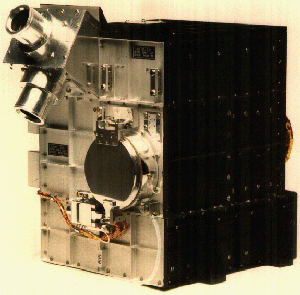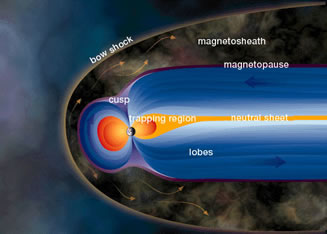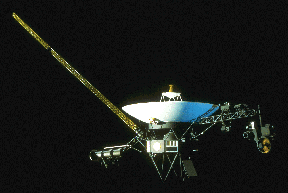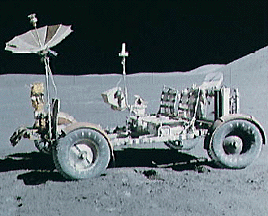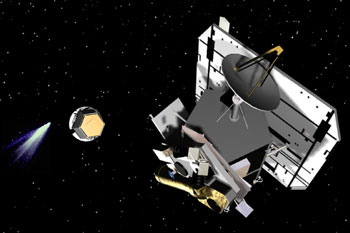Click on image for full size
European Space Agency
COSPIN Instrument Page
COSPIN is one of the instruments onboard the Ulysses spacecraft. COSPIN stands for the COsmic and Solar Particle INvestigation. The COSPIN instrument is actually made up of 5 different sensors: the Dual Anisotropy Telescopes (ATs), the Low Energy Telescope (LET), the High Energy Telescope (HET), the High Flux Telescope (HFT), and the Kiel Electron Telescope (KET). Pictures of some of these sensors appear here.Together, these instruments provide measurements of the intensities, spectra, arrival directions, and composition of galactic cosmic rays, energetic particles from the Sun, and particles that have been accelerated in the solar wind and planetary magnetospheres. Studies by Pioneer 10 and 11 and Voyager 1 and 2 started to fill in our picture of the heliosphere at great distances from the Sun and Earth. Ulysses (and specifically instruments like COSPIN) is helping us to fill in the heliospheric picture at out-of-the ecliptic ranges. The Earth is of course inside the heliosphere, or the region of space influenced by the solar wind. Because the solar wind affects life on Earth, it is important that we understand the heliosphere and all of the particles within this region. COSPIN does just that. It allows scientists to look at normal particles that have come from the Sun, energetic particles that have come from solar flares or CMEs, and galactic cosmic rays.
The Ulysses probe was launched in 1990. It is still alive and well. The builders of COSPIN knew that Ulysses would be in space a long time and so they took special care to assure that COSPIN would be able to survive a long time in space. They also followed the ground rule of many spacecraft designers in that no single failure of any one sensor should result in the failure of another sensor. This assures us that useful data will be coming from COSPIN for a long time to come.


